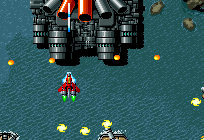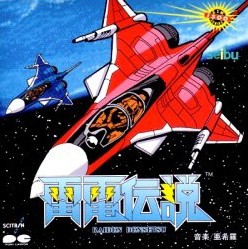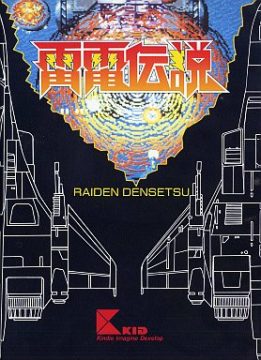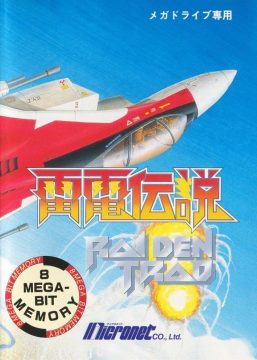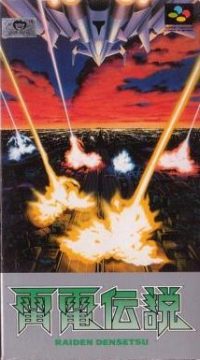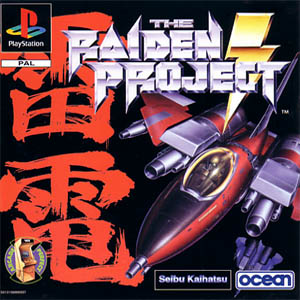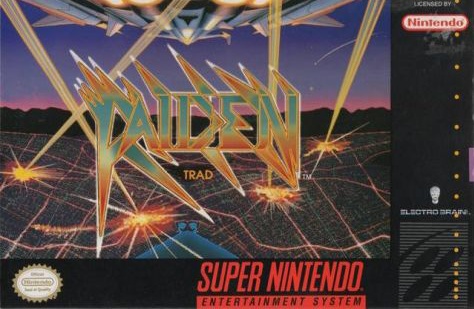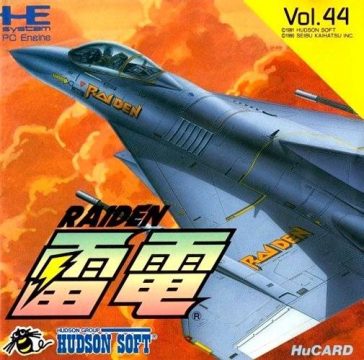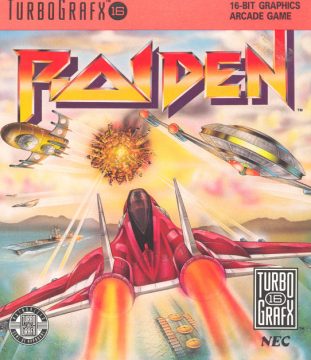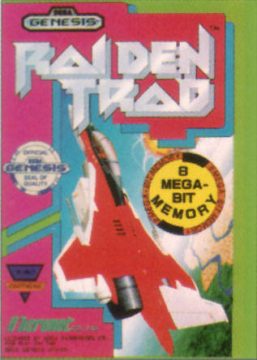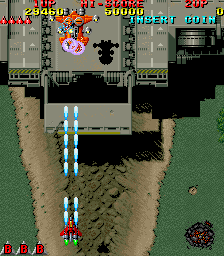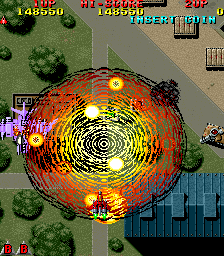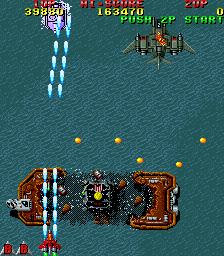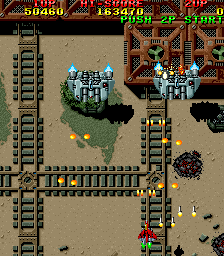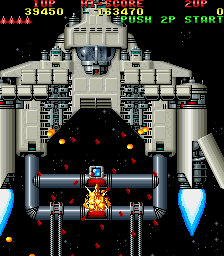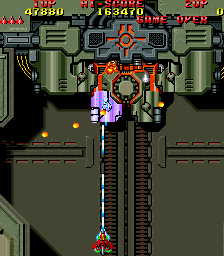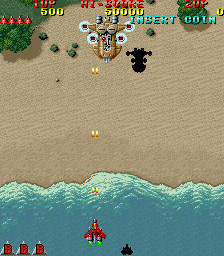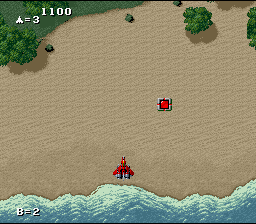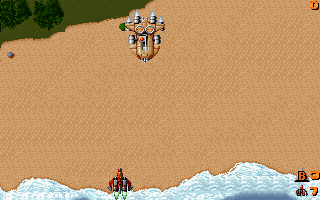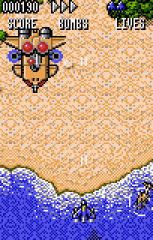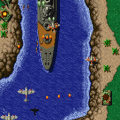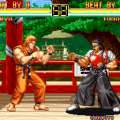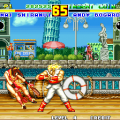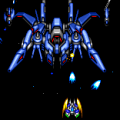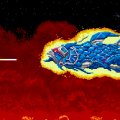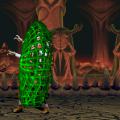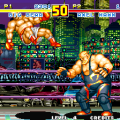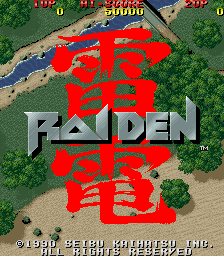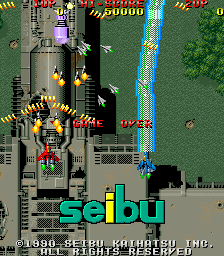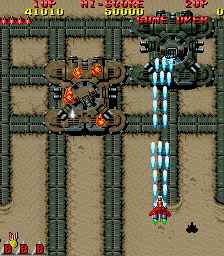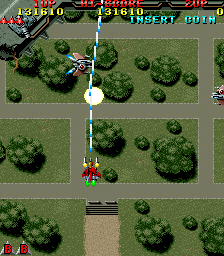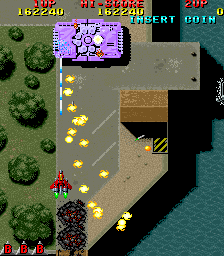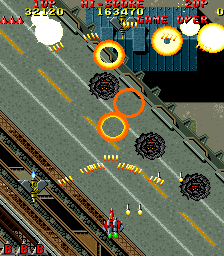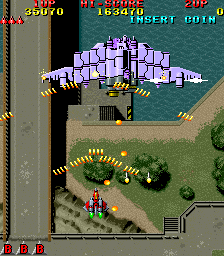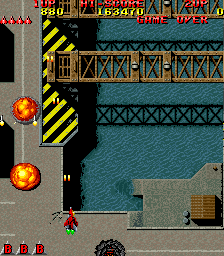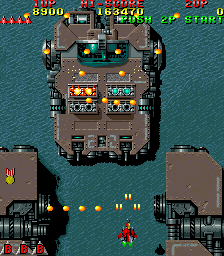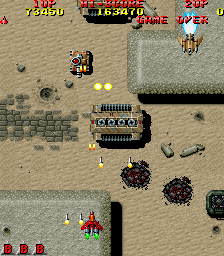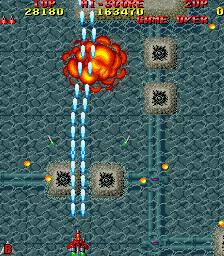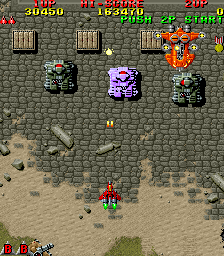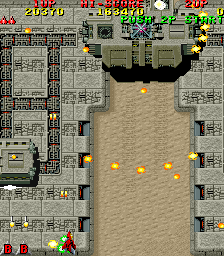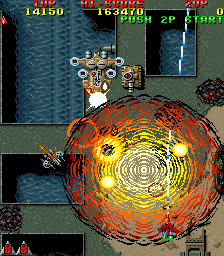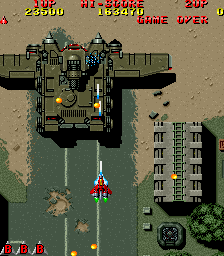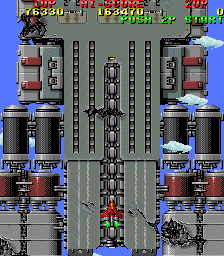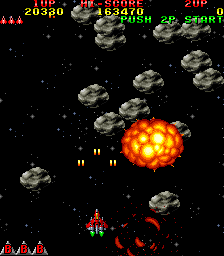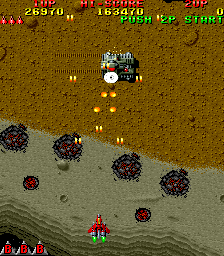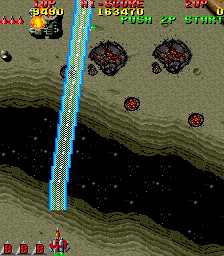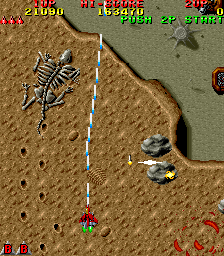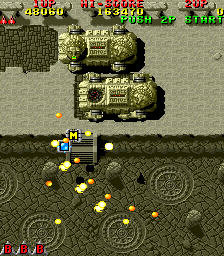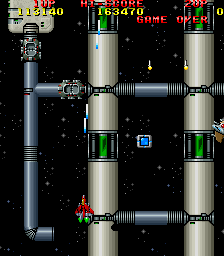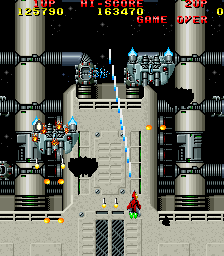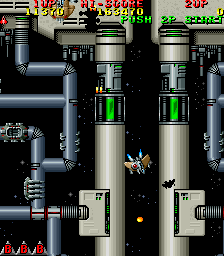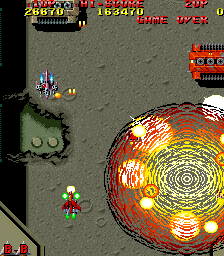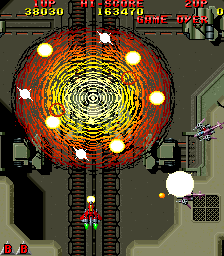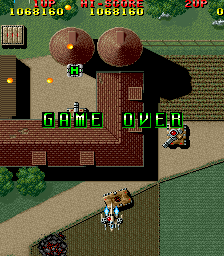Seibu Kaihatsu’s Raiden series is one of the most well-known vertical shoot-em-ups from the golden age of the genre. It was released in 1990, the year before Street Fighter II was released and shifted arcade focus to the fighting game scene, though it still received a number of spin-offs long after other shooters fell out of style.
Raiden‘s design was influenced by its contemporaries, like Capcom’s 19XX series and Toaplan’s numerous shooters like Truxton and Fire Shark. Raiden was nothing incredibly innovative for its time, nor was it flashy, colorful, or otherwise visually striking. That being said, it had a definite sense of refinement in its straightforward design and was everything a shoot-em-up should be: simple, fast-paced, and full of large explosions.
Raiden was notable enough to warrant a sequel, Raiden II, three years later, and also had an obscure stand-alone spinoff by the name of Viper Phase 1. Another spinoff by the name of Raiden Fighters went on to have three installments, each one significantly better than the last. It would take a ridiculously long amount of time before the series was resurrected for the PlayStation 2 with Raiden III, leading to more sequels in the subsequent years.
The overall design of the series is the template for the stereotypical spaceship shooter, what with forests and deserts and oceans full of antagonistic vehicles who want to blast you out of the sky. The main series all take place above terra firma before launching your ship into the stratosphere to play the latter levels in space. Relatively conservative design and gameplay while managing to offer challenge and fast-paced entertainment is the credo of Raiden.
The genesis of the series started with a sleek logo imposed over the kanji for “Raiden.” Raiden means “thunder and lightning” in Japanese, and it has been used quite a bit in video game culture; i.e., the controversial character from the Metal Gear Solid series, the basis for the Pokemon Raichu, and the thunder god from Mortal Kombat, which either erroneously or hilariously spells and pronounces it as “Rayden.” Before any of that, there was naught but one (or two) single-pilot fighters versus a legion of tanks and jets. You pilot the eponymous Raiden, a bitching futuristic-looking bright red (or light blue if you’re player two) aerial fighter jet, against the war machines of the nefarious Crassanian Empire.
That is the only story you get, and it is the only story you NEED. Hell, that’s the story for ninety-five percent of all shoot-em-ups, at least up to and including Raiden. The fight takes place over eight levels of increasing difficulty. You start out flying over enemy bases stationed throughout a continuous Xevious-esque landscape, obliterating dangerous and harmless targets alike. The action begins in what appears to be an enemy-occupied farmland, leading into a harbor, an ocean rig, what appears to be ancient ruins, and a large military base. After beating stage five, you are outfitted with interstellar thrusters as you head into space for the last three levels, which respectively take place on a large asteroid, a galactic base with lots of pipes, and the very well fortified Crassanian headquarters.
Admittedly, the stages on Earth run together in terms of appearance with realistically toned graphics. Some shoot-em-ups (like pretty much anything by Cave) are a rainbow cornucopia of vibrant colors, but for better or worse, Raiden is the exact opposite. They’re nothing impressive for 1990 and might even be considered dull, but they get the job done and lend to Raiden a unique simplistic appearance. There are also a few neat visual touches like the cows and running bystanders in the first stage. Another aspect that may not seem like much right now but was fine for the time was the sound quality. The music is good, very much fast-paced and heroic-sounding shoot-em-up music, though some of it repeats over several levels. The first level tune, “Gallantry,” is one of the more notable starting BGMs in shoot-em-up history. There’s not much to say about the actual sound effects, though each defeated boss gives off a very satisfying BLAM.
By destroying these slightly-larger-than-fodder helicopters, you get to power up either your main weapon or sub weapon. There are two main weapons: A red power-up that augments your default gun to make it a wide vulcan that fires out dozens of bullets at once, and a blue power-up which eschews your vulcan for a straight laser that is powerful but does not have much horizontal spread as the red weapon. For sub weapons, you can either pick up homing missiles (green H) which easily pick off fodder enemies but do little damage, or napalm missiles (yellow M) that are pretty slow but do good damage to larger enemies. All four of these weapons are powered up by picking up weapon icons of the same color; if you have the red weapon and you pick up a blue one, you will only change your main weapon and not power it up. If you get lucky, you can also find a blue P and instantly max out your main gun and missiles.
You also have bombs that drop to the ground and create an awesome large spherical explosion after a second’s delay. As with most other shoot-em-ups, you start out with three bombs per life and can gain more by picking up red B icons. If you have any remaining bomb stock by the end of each level, it helps add up to your end-of-stage score. Each stage bonus is based upon medals, bonus items you collect throughout each stage by destroying crates, buildings, and other ground targets. Medals are five hundred points on base, with each one also adding one thousand points to your stage bonus, and your score is further multiplied by your bombs. For example, if you have three bombs and eleven medals, you get thirty-three thousand points. You can also pick up two hidden bonus items, Miclus and the Fairy. Miclus is a curious little blue dragon who was actually a boss in an obscure Seibu Kaihatsu platformer by the name of Wiz. Here, he’s become the company mascot and is worth 10,000 points if you can somehow find him. The Fairy is worth a whopping 30,000 points if you can also uncover it and pick it up as it flies about erratically. Neither of these big bonus items contribute to the stage end points as do medals and bombs.
Unfortunately, you only get the points for the medals you acquire in one life, meaning that you don’t get any medal credit if you die at a boss. Death is probably going to occur frequently for all aside from the most sharp-eyed shoot-em-up fans. Raiden runs on a good difficulty curve that invites you in before kicking your ass hard in the latter half of the stages. As with most classic Toaplan-esque vertical shoot-em-ups, there are no obstructions to run into, and the hazards come solely from enemy fire. The enemies consist of relatively standard armada fodder: Tanks, helicopters, stationery turrets, and what have you. Larger enemies come into play, like moderate-sized tanks and large multi-turret battleships, and as these enemies take more punishment, you have to decide between whether you want to opt for the vulcan and/or homing missiles, better for weaker fodder, over the laser and/or napalm missiles, better for large enemies and bosses.
A subtle but interesting mechanic of the game is how the landscape shifts beneath your ship as you move horizontally. This allows for a wider arena to avoid bullets and makes you feel less like you’re flying down a narrow tube. To stave off enemy fire from one side of the screen, stay on the edge of the other side, as enemies offscreen can’t shoot at you. The caveat is flying back into the range of unexpected enemies and suddenly meeting a deadly bullet. You can drop a bomb and the explosion radius will protect you for a second, but there is a delay between when you drop it and when it hits the ground, meaning that you are not immediately invincible and must anticipate enemy attacks if you want to use bombs defensively. If you die, you lose your weapons and start out again with the normal unpowered single-shot vulcan, though one or two weapon power-ups will fly out to help you bounce back a bit. It’s not quite as much of a disadvantage trying to recover in some Gradius games, as you can continue on the spot if you have another life. You have to start back at a checkpoint after losing all lives, however, at least if you’re playing in single player mode.
The enemies become increasingly erratic and aggressive the further you go into the game, tossing out a combination of slow round orange bullets, larger yellow shots, quick shots that can be dissolved by your own fire, and evil star-shaped projectiles often shot out by bosses as part of an attack frenzy. Around the beginning, the amount of enemy fire you meet with is moderate and relatively manageable, but the sheer quantity of enemies and bullets becomes vicious once you go into space. In the tradition of later-generation Toaplan games like Batsugun and Dogyuun, you have to avoid a lot of projectiles and get used to how enemies and bosses attack you.
Naturally, the bosses spit more bullets than any other enemy and all prove to be quite difficult. Each stage ends with a unique boss that often has a nasty surprise in store for you. For example, the first boss appears to be a basic Crassanian tank, and it is, but it is joined by another tank a few seconds after its original appearance. The giant tank at the fifth stage’s end actually spreads “wings,” not to fly, but to unleash more guns on you. The relatively easy sixth boss is a duo of strange alien tanks with large statue heads on them. Finally, the finale is with the Crassanian command console, which tosses out projectiles at a ridiculous rate and will require incredible reflexes to beat, let alone survive reaching it.
Like most other shoot-em-ups of the arcade era, a second player can join in at any time and join the fight. Naturally, the game feels more frenetic with a buddy to help, and it’s also made easier by either player being allowed to continue on the spot as long as one of you is still alive. Two-player mode also has a neat added bonus if you fly both ships really close or on top of each other. If you shoot your weapons together while in close proximity, the weapon energy combines into green starbursts which fly out in all directions. While unpredictable, these green blasts can do brutal damage upon bosses if used up close to them. It’s difficult to coordinate, but it gives a fine extra edge to an already fantastic two-player experience. Heck, the game itself is a hell of a ride even with only one player. It may be a tad antiquated nowadays, but gamers willing to recognize that Raiden is definitely of the old-school will find it to be a classic game that still offers much fun and challenge.
Most classic shoot-em-ups enjoyed a myriad of console ports, and Raiden is no exception. Most of these versions are a bit easier than the arcade game, but force you back to a checkpoint when you get killed, rather than just when continuing.
The TurboGrafx-16 port was published by Hudson and developed by AI, the team behind the portable Super Robot Wars series. Unfortunately, it’s quite frustrating. The graphics look decent, a bit pixilated but with brighter contrast than the arcade version, and the sound carries over well to the TurboGrafx-16’s sound chip. However, the gameplay somehow feels off, as the modified resolution somehow makes it a bit harder to dodge enemy projectiles. The worst change is how you start back at a checkpoint after losing a life, not just after continuing, and you only get six credits to beat the game. However, overall the difficulty is lower than the arcade version. Two player mode is gone as well. This was followed up by a CD release called Super Raiden, given a cool Redbook audio soundtrack and two new levels, but otherwise little else is changed from the HuCard version.
Most of the ports go under the name Raiden Densetsu (“Raiden Legend”), with the Genesis/Mega Drive and SNES versions also being called Raiden Trad, for some reason or another. The Genesis version was developed by Micronet, who worked on the Mega Drive shooter Curse. Despite some hits in the graphical and musical department, the game actually plays well. A large portion of the screen is taken up by a status bar to account for the larger resolution of the Genesis and to attempt to replicate the vertical monitor orientation of the arcade game. There’s also a brand new final level exclusive to this port.
The SNES version of Raiden was lamentably handled by infamous shadow developer Micronics, whose legacy of suckiness can be found in boogled ports like the NES 1942 and Athena. It has some janky animation and the sound quality somehow isn’t all that great, and the feel of the game is like the off-kilter TurboGrafx-16 version. It at least offers leniency by allowing you to continue on the spot no matter what, but the overall aggravation of enemies on any difficulty higher than easy means you’ll be needing all of them.
The FM Towns port is the best of all of them, as while it doesn’t contain any of the extra levels found in other versions, it looks and plays very faithfully to the arcade version. It even includes a exclusive arranged soundtrack, one that’s even better than the PC Engine CD version.
The PC DOS version looks surprisingly excellent compared to most IBM PC ports of the era. However, it only supports FM sound, and can’t play music and sound at the same time. It controls well, and unlike the Genesis port, expands the view to the whole screen. However, some graphics are odd, like the power-up ships missing their wings, and a new explosion animation for the bombs make it hard to tell their exact area of impact. Something just overall feels off about the port, even though it’s not quite as blatantly bad as the SNES one.
The Jaguar port is one of the better releases, with excellent graphics and a decent MOD soundtrack, although again it has a gigantic score window taking up tons of screen real estate, even larger than the Genesis version. The Lynx version was almost entirely completed but was not officially released until 1997 in very small quantities. It’s decent for a portable system, and requires that you turn the system side-wise so you get a similar vertical layout to the arcade game. Still, it’s quite ugly and cramped. Strangely, the main fighter is blue in this version instead of Red. An Amiga port was completed but never released. The only evidence of its existence is a demo that loops the first level over and over.
Finally, what is likely the best port above all else is the PlayStation version, released as one of the earliest games for the system (coming in one of those old-style longboxes) under the name of The Raiden Project. The port is nigh-flawless save for a few loading times here and some tweaks in enemy behavior and other small elements. It also offers remixed music, though different (and not quite as good) as the PCE or FMT versions. The Japanese version offers a tate mode so you can turn your television on its side to play it in the proper aspect ratio, but this was disabled in the North American release. However if you have a cheat device you can hack the game to reactivate it. The best thing about Raiden Project is that it also includes Raiden II, which only had home ports to this compilation and the PC. It’s a fantastic package that’s well worth tracking down to own the definitive version of the two classic games. The version found on The Raiden Project was also released separately in Japan as part of the MajorWave budget label.
Screenshot Comparisons
